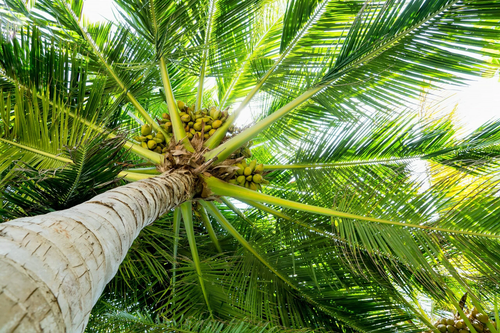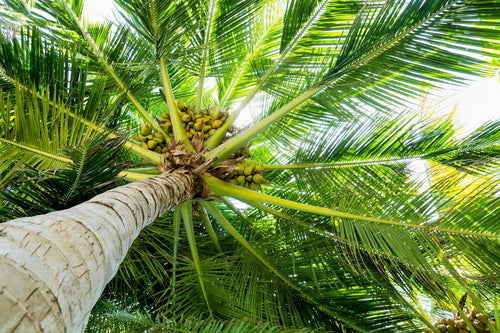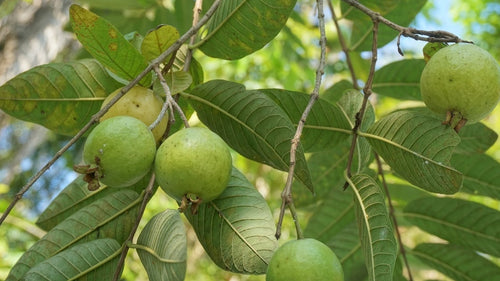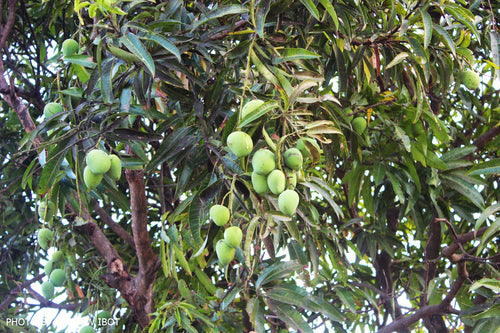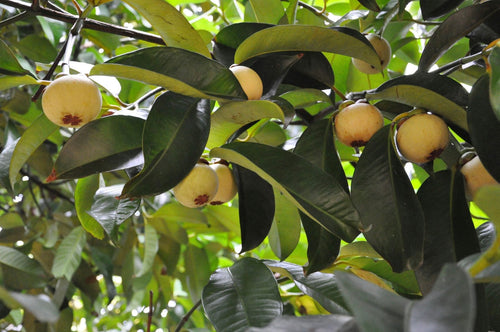Superv Technologies’ Eco-Gifts: Trees for a Sustainable Tomorrow
SuperV Technologies Pvt. Ltd., a leading name in software development and IT solutions, celebrated Earth Day with a meaningful green initiative. Speci Read more
Project Update 1

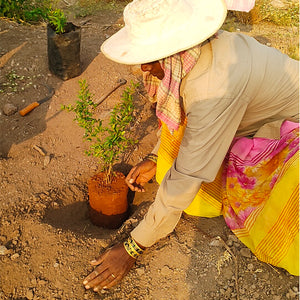
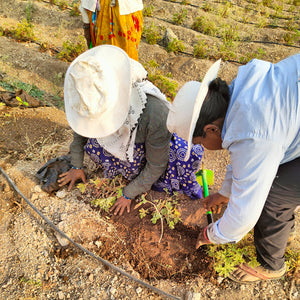

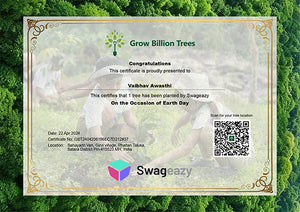
Digital Forest
Forest with 42 Trees planned
Want to plant your tree now?
Plant a Tree @ 299Superv Technologies’ Eco-Gifts: Trees for a Sustainable Tomorrow
SuperV Technologies Pvt. Ltd., a leading name in software development and IT solutions, celebrated Earth Day with a meaningful green initiative. Specializing in cutting-edge technologies like cybersecurity, data analytics, and cloud computing, the company extended its innovation into environmental stewardship with a tree plantation initiative rooted in the agroforest concept.
As a heartfelt gesture, SuperV Technologies presented trees as gifts to its employees, symbolizing the company’s commitment to sustainability and appreciation for its workforce. By integrating tree plantation into Earth Day celebrations, the initiative reflects a thoughtful blend of environmental responsibility and employee engagement.
This agroforestry effort not only contributes to ecological balance by enriching biodiversity and promoting sustainable land use but also reinforces the company’s ethos of driving positive change beyond technology. SuperV Technologies continues to lead by example, demonstrating how businesses can align innovation with environmental and social responsibility for a greener, better tomorrow.
Tree Plantation Date
22nd April 2024
Plantation Location
Sahaydri Van, Girvi, Satara, Maharashtra 415523
Trees Planted
Total Count: 42 Trees
Species Name: Mango, Guava, Chiku, Jackfruit, Coconut
Forest Type: Agroforest
SuperV Technologies Pvt. Ltd., a pioneer in software development and IT solutions, celebrated Earth Day with a thoughtful agroforest-inspired tree plantation initiative. As a gesture of appreciation and environmental responsibility, the company gifted trees to its employees, symbolizing growth, sustainability, and innovation. This initiative not only honored Earth Day but also contributed to creating thriving agroforests that promote biodiversity, enhance soil health, and support sustainable ecosystems. By blending technology leadership with ecological stewardship, SuperV Technologies demonstrated its commitment to a greener future while fostering a culture of gratitude and environmental consciousness among its employees.
Advantages Of Agroforest
Promotes Biodiversity
Agroforests support a diverse range of plant and animal species by creating a balanced ecosystem. By planting trees in an agroforest model, SuperV Technologies contributes to enriching the habitat for birds, insects, and other wildlife, fostering ecological harmony.Enhances Soil Fertility
Agroforests improve soil health through natural processes like nitrogen fixation, organic matter deposition, and erosion control. The trees planted as part of this initiative help maintain fertile and sustainable soil conditions, which are essential for long-term agricultural and ecological benefits.Carbon Sequestration and Climate Action
Trees in agroforests absorb significant amounts of carbon dioxide, mitigating climate change by reducing greenhouse gases. SuperV Technologies' initiative aligns with global climate goals by creating green spaces that act as carbon sinks, contributing to a healthier planet.Promotes Sustainable Land Use
The agroforest approach optimizes land use by integrating tree plantations with agricultural practices, ensuring productivity and environmental sustainability. This initiative demonstrates how corporate actions can support sustainable land management strategies.Boosts Employee Engagement and Awareness
Gifting trees to employees fosters a sense of ownership and connection to environmental causes. It strengthens the bond between employees and the company while raising awareness about sustainability and the role individuals can play in protecting nature.Supports Local Communities
Agroforests provide long-term benefits like food, fodder, and timber to surrounding communities. By adopting this model, SuperV Technologies creates opportunities for shared prosperity while contributing to environmental restoration.Strengthens Corporate Social Responsibility (CSR)
This initiative reflects SuperV Technologies’ dedication to CSR by integrating environmental care with employee engagement. It enhances the company's reputation as a socially and environmentally responsible organization.Celebrates Earth Day with Purpose
By implementing this initiative on Earth Day, SuperV Technologies reinforces the importance of environmental conservation and sets a benchmark for meaningful corporate celebrations. The event serves as a reminder of the company’s commitment to a sustainable future.
Activities During Tree Plantation
During Superv Technologies Pvt. Ltd.'s tree plantation initiative, all activities were carried out by skilled farmers, ensuring expertise and efficiency in creating a sustainable agroforest. The process began with the careful preparation of the land, including soil enrichment and layout planning to support biodiversity and sustainable growth. Farmers planted a diverse selection of tree species, chosen to complement the agroforest concept by enhancing soil fertility, supporting local ecosystems, and providing long-term environmental benefits. They also ensured proper spacing and planting techniques to maximize the ecological impact. Post-plantation care, such as mulching and initial watering, was undertaken to promote healthy tree growth, ensuring that the initiative contributes effectively to creating a thriving and sustainable agroforest ecosystem.
Tree Plantation Purpose
SDGs Achieved Through SuperV Technologies Pvt. Ltd.'s Agroforest Tree Plantation Initiative
6. SDG 13: Climate Action
The tree plantation initiative helps combat climate change by sequestering carbon dioxide, reducing greenhouse gas emissions, and mitigating the effects of global warming. Agroforests also act as natural buffers against extreme weather, showcasing SuperV Technologies' contribution to building climate resilience.7. SDG 15: Life on Land
By promoting the agroforest model, the initiative enhances biodiversity, protects natural habitats, and restores degraded land. The planted trees support flora and fauna while contributing to sustainable land ecosystems, directly addressing this SDG.8. SDG 17: Partnerships for the Goals
SuperV Technologies Pvt. Ltd.'s partnership with Grow Billion Trees has exemplified the spirit of, Partnerships for the Goals by fostering collaboration for sustainable development. Through this alliance, the company leveraged Grow Billion Trees' expertise in agroforest planning and implementation to ensure the success of its tree plantation initiative. This partnership not only streamlined the plantation process, with skilled farmers carrying out the activities, but also amplified the ecological impact by aligning with best practices in biodiversity enhancement and land restoration. By combining technological innovation with environmental stewardship, the collaboration demonstrates how synergies between corporations and sustainability-focused organizations can drive meaningful progress toward global environmental goals.ESGs Achieved Through Agroforest
Environmental (E)
Superv Technologies Pvt. Ltd.'s tree plantation initiative in the agroforest concept significantly contributes to environmental conservation and sustainability. By planting trees as part of an agroforestry model, the company addresses pressing ecological challenges such as climate change, deforestation, and soil degradation. The initiative supports carbon sequestration, as the planted trees act as natural carbon sinks, absorbing greenhouse gases and mitigating global warming. Furthermore, agroforests enhance soil fertility, reduce erosion, and improve water retention, creating a healthier and more sustainable ecosystem. This initiative not only restores biodiversity by providing habitats for various species but also aligns with global environmental goals like preserving life on land and combating desertification. By celebrating Earth Day with such an impactful initiative, SuperV Technologies reinforces its commitment to leaving a positive environmental legacy.Social (S)
SuperV Technologies’ agroforest initiative goes beyond environmental impact by fostering social well-being and inclusivity. Gifting trees to employees on Earth Day symbolizes the company’s appreciation and promotes a deeper connection between individuals and environmental sustainability. This thoughtful gesture encourages employees to embrace a greener mindset, fostering awareness and collective responsibility for the planet. Moreover, the plantation activities, carried out by local farmers, provide meaningful employment opportunities, thereby uplifting rural communities and promoting economic stability. This dual focus on employee engagement and community empowerment highlights the company’s dedication to creating shared value for all stakeholders. By integrating environmental consciousness with social impact, SuperV Technologies builds a sense of purpose and unity within its workforce while contributing to societal welfare.Governance (G)
SuperV Technologies’ tree plantation initiative reflects exemplary corporate governance by embedding sustainability into its strategic vision. The company’s collaboration with Grow Billion Trees ensures the initiative is executed transparently and effectively, adhering to best practices in agroforestry. This partnership demonstrates a commitment to accountability and responsible resource management, ensuring the initiative delivers long-term ecological and social benefits. By aligning its actions with international frameworks such as the Sustainable Development Goals (SDGs), SuperV Technologies showcases its role as a forward-thinking, ethical organization. The integration of environmental, social, and governance (ESG) considerations into its operations reinforces its reputation as a responsible corporate entity dedicated to balancing business growth with sustainability, thereby inspiring trust among stakeholders and the broader community.
Commitment by Grow Billion Trees
Grow Billion Trees is committed to driving sustainable plantation efforts, ensuring every initiative aligns with key environmental objectives and promotes long-term ecological balance. They focus on selecting native tree species that are well-adapted to local ecosystems, ensuring a higher survival rate and stronger environmental impact.
To maintain plant health and longevity, Grow Billion Trees emphasizes continuous maintenance and regular monitoring of the plantations. This approach helps ensure that each tree thrives, contributing effectively to both biodiversity and climate resilience.
Transparency is a core principle in their operations. Clients receive comprehensive reports, including geo-tagging of planted trees, survival rate updates, and ongoing progress reports. This level of openness allows clients to track the direct impact of their contributions, reinforcing trust and accountability.
Through their dedication to sustainable practices, Grow Billion Trees ensures that every plantation project leaves a lasting positive footprint on both the environment and the local communities it serves.
Summary
SuperV Technologies Pvt. Ltd. marked Earth Day with a meaningful tree plantation initiative rooted in the agroforest concept. As a gesture of appreciation, the company gifted trees to its employees, symbolizing growth, sustainability, and innovation. Carried out by skilled farmers, the initiative contributed to creating thriving agroforests that promote biodiversity, improve soil health, and mitigate climate change through carbon sequestration. By blending environmental stewardship with employee engagement, SuperV Technologies not only celebrated Earth Day with purpose but also reaffirmed its commitment to fostering a greener, more sustainable future.
Trees for Corporates
Trending
Most Popular
1. Agroforestry Benefits
Agroforestry combines trees and crops to maximize land productivity. It's like throwing a party where both the trees and crops get along fabulously, creating a balanced ecosystem. Superv Technologies Pvt. Ltd. embraced this approach in their Earth Day tree plantation initiative, showcasing how trees can enhance soil health, increase water retention, and promote biodiversity. Agroforestry isn't just a buzzword; it's a game-changer for sustainable farming. By planting trees alongside crops, this method helps prevent soil erosion and enriches the soil with nutrients. Superv’s involvement demonstrates how a little greenery can go a long way, proving that planting trees isn’t just for aesthetics but for agricultural innovation. So, the next time you think of trees, remember they’re doing a lot more than just looking pretty—they’re busy supporting ecosystems and providing a sustainable way forward for future generations.
2. Sustainable Development Goals (SDGs)
Superv Technologies Pvt. Ltd. takes the planet's well-being seriously, and their Earth Day tree plantation initiative is an excellent example of how corporate actions can contribute to global sustainability. This initiative directly impacts several SDGs, such as Climate Action (SDG 13) and Life on Land (SDG 15). By planting trees in the agroforest concept, Superv contributes to carbon sequestration, helps restore biodiversity, and promotes sustainable land use. The company’s proactive approach shows how corporate social responsibility isn’t just about making profits but also about making a positive impact on the planet. So, let’s raise a toast to tree planting, because these tiny saplings are doing big things, from combating climate change to promoting healthier ecosystems!
3. Employee Engagement in Sustainability
At Superv Technologies Pvt. Ltd., Earth Day was about more than just trees—it was about creating a culture of sustainability. Gifting trees to employees as part of the agroforest tree plantation initiative is a fun yet meaningful way to engage staff in environmental responsibility. This initiative isn’t just a "one-off" event; it fosters a sense of ownership and pride in contributing to environmental causes. Employees are more likely to feel motivated and inspired when their company aligns its values with personal growth—both professional and environmental. By making tree planting part of the employee experience, Superv blends corporate objectives with environmental impact, proving that saving the planet can be an engaging, fun, and rewarding endeavor for everyone involved.
4. Agroforest Restoration
Agroforests are like the superheroes of land restoration. They save the soil, improve water quality, and restore ecosystems—talk about multitasking! Superv Technologies Pvt. Ltd.'s initiative embodies this concept, using tree planting to create vibrant agroforests that restore degraded land while promoting biodiversity. This is more than just planting trees; it's about creating a dynamic system that benefits the environment and the local community. When you add trees to agricultural landscapes, you’re helping reverse the damage caused by traditional farming practices. Agroforests work hard to prevent soil erosion, promote healthy crop yields, and provide homes for wildlife. Superv's dedication to this restoration process through their Earth Day initiative proves that even small actions can lead to big environmental changes.
5. Corporate Social Responsibility (CSR) and Tree Planting
When it comes to corporate social responsibility, Superv Technologies Pvt. Ltd. takes it to the next level. Their tree plantation initiative isn’t just a gift for employees—it’s a direct investment in the planet’s future. As part of their commitment to CSR, Superv integrates sustainable practices like tree planting into their corporate culture. This initiative helps reduce the company’s carbon footprint, enhances local biodiversity, and engages employees in a hands-on way. Superv’s thoughtful CSR approach demonstrates that businesses have the power to make a difference, whether it’s through innovative technology or by planting trees. By contributing to the environment, they show that responsibility goes beyond profits—it extends to nurturing the planet and future generations.
6. Carbon Footprint Reduction
Every tree counts when it comes to reducing carbon footprints, and Superv Technologies Pvt. Ltd. knows this well. Through their agroforest tree plantation initiative, the company helps offset carbon emissions by planting trees that naturally absorb CO2. While technology can solve a lot of problems, nature offers the best remedy for climate change, and trees are at the heart of that solution. The trees planted by Superv serve as powerful carbon sinks, pulling CO2 out of the atmosphere and storing it in their roots and trunks. This simple yet effective method of combating climate change shows that when we work with nature, we can make significant strides toward a sustainable future. So, let's give a round of applause to the mighty trees that keep our planet healthy and happy!
7. Sustainable Land Management
Sustainable land management is all about finding the sweet spot between productivity and preservation. Superv Technologies Pvt. Ltd.'s agroforest initiative is a prime example of this balance. By planting trees alongside crops, the company encourages practices that restore soil health, prevent erosion, and promote better water retention. This approach not only enhances agricultural productivity but also improves land quality in the long run. Agroforests create resilient landscapes that can weather the storms—literally and figuratively. For Superv, promoting sustainable land management through their tree planting efforts isn’t just about growing trees; it’s about fostering a future where agriculture and conservation go hand in hand, ensuring that future generations have a thriving environment to work with.
8. Green Corporate Culture
Superv Technologies Pvt. Ltd. is cultivating more than just trees—they’re growing a green corporate culture. Their Earth Day tree plantation initiative demonstrates how integrating sustainability into a company’s core values can drive positive change. By gifting trees to employees, Superv encourages a deeper connection with environmental causes, inspiring individuals to take action both within and outside the workplace. A green corporate culture is one where sustainability is woven into every decision, from product development to employee engagement. This initiative is just one example of how Superv builds a workplace that thrives on eco-friendly practices, encouraging everyone to be more mindful of their impact on the environment. It’s not just about business; it’s about creating a sustainable future.
FAQ
What is the significance of agroforestry in environmental sustainability?
Agroforestry, as practiced by SuperV Technologies Pvt. Ltd., integrates trees with agricultural crops, creating a symbiotic environment that benefits both. This method enhances soil fertility, prevents erosion, improves water retention, and increases biodiversity. It also contributes to carbon sequestration, helping to mitigate climate change. SuperV’s tree plantation initiative promotes these benefits, supporting environmental sustainability and contributing to the broader goal of global ecological balance.
What are the main benefits of SuperV Technologies Pvt. Ltd.’s tree plantation initiative?
SuperV Technologies Pvt. Ltd.’s tree plantation initiative in the agroforest concept offers numerous benefits. It helps restore soil health, improves water retention, supports biodiversity, and combats climate change by capturing carbon. Additionally, it strengthens community ties by providing sustainable livelihoods for local farmers involved in the planting process. This initiative aligns with SuperV’s commitment to environmental stewardship and corporate social responsibility, offering long-term ecological and social impacts.
How does SuperV Technologies Pvt. Ltd. engage employees in its tree plantation activities?
SuperV Technologies Pvt. Ltd. engages its employees in sustainability efforts by gifting trees as part of its Earth Day celebrations. Employees actively participate in the initiative by learning about agroforestry, tree care, and environmental responsibility. This initiative fosters a sense of pride and responsibility, encouraging staff to incorporate sustainability into their daily lives. SuperV’s commitment to employee engagement ensures that the workforce is motivated to contribute to a greener and more sustainable future.
How does agroforestry help in promoting biodiversity?
Agroforestry, as implemented by SuperV Technologies Pvt. Ltd., plays a crucial role in promoting biodiversity. By planting trees alongside crops, it creates a diverse environment that supports various species of plants, animals, and insects. These ecosystems thrive in a balanced setting, offering habitats and food sources for wildlife. SuperV’s agroforestry initiative not only restores biodiversity but also ensures that the land remains productive and resilient to environmental challenges, creating a sustainable balance between nature and agriculture.
What role do local farmers play in SuperV Technologies Pvt. Ltd.'s tree plantation initiative?
Local farmers are central to the success of SuperV Technologies Pvt. Ltd.’s tree plantation initiative. The company partners with farmers to plant and maintain trees in the agroforest concept, providing them with both employment opportunities and sustainable livelihoods. These farmers contribute their expertise in land management and tree care, ensuring the trees thrive. By involving farmers, SuperV promotes local economic growth while also fostering environmentally conscious practices in rural communities.
How does SuperV Technologies Pvt. Ltd. contribute to reducing carbon footprints through tree planting?
SuperV Technologies Pvt. Ltd. reduces its carbon footprint through its tree plantation initiative, where the trees act as carbon sinks by absorbing CO2 from the atmosphere. As part of the agroforest concept, the trees help offset the carbon emissions generated by the company’s operations. This initiative contributes to climate change mitigation efforts, and it’s a simple yet effective way for SuperV to reduce its environmental impact and demonstrate corporate responsibility in the fight against global warming.
Why is Earth Day an ideal occasion for SuperV Technologies Pvt. Ltd. to promote tree plantation?
Earth Day serves as a perfect occasion for SuperV Technologies Pvt. Ltd. to promote its tree plantation initiative as it aligns with global efforts to raise awareness about environmental conservation. Gifting trees to employees not only enhances their connection to nature but also reinforces SuperV’s commitment to sustainability. Earth Day provides a platform to highlight the importance of protecting the planet and encourages collective action toward a greener future. SuperV’s initiative helps inspire others to embrace sustainability year-round.
How does SuperV Technologies Pvt. Ltd. ensure the long-term success of its tree plantation initiative?
SuperV Technologies Pvt. Ltd. ensures the long-term success of its tree plantation initiative by carefully selecting suitable tree species for the agroforest concept and working closely with experienced farmers to maintain the plants. The company focuses on soil health, water management, and ecosystem restoration to create a thriving environment for the trees. Regular monitoring and support also help ensure the success of the plantation, making sure that the trees grow to maturity, enhancing the ecological benefits for years to come.
What impact does SuperV Technologies Pvt. Ltd.’s agroforestry initiative have on local communities?
SuperV Technologies Pvt. Ltd.’s agroforestry initiative positively impacts local communities by providing employment opportunities and promoting sustainable agricultural practices. The involvement of local farmers in tree planting creates jobs while also supporting the community’s overall economic development. Additionally, the initiative improves the environment, leading to healthier crops and better long-term productivity. By partnering with communities in this way, SuperV creates shared value, fostering both social and environmental benefits.
How does SuperV Technologies Pvt. Ltd. measure the success of its tree plantation initiative?
SuperV Technologies Pvt. Ltd. measures the success of its tree plantation initiative through ongoing monitoring of tree growth, soil health, and biodiversity improvements. Success is also measured by the positive impact on the local community, including the creation of sustainable livelihoods for farmers and the enhancement of local ecosystems. Additionally, SuperV tracks the environmental benefits such as carbon sequestration and improved water retention, ensuring that the initiative delivers long-term, measurable results that contribute to broader sustainability goals.
- Choosing a selection results in a full page refresh.
- Opens in a new window.


